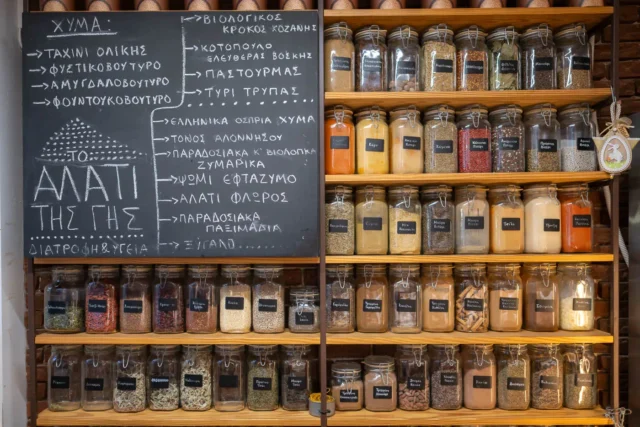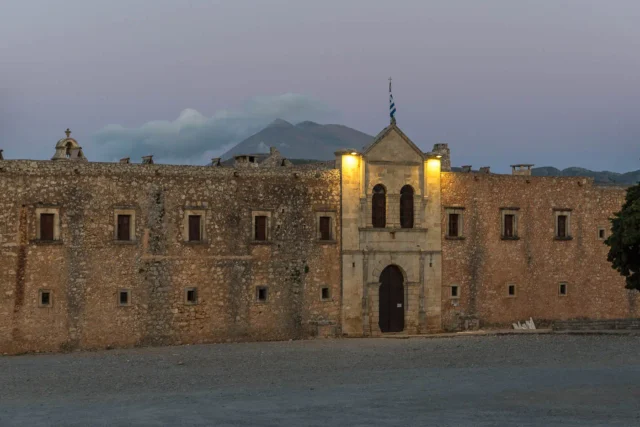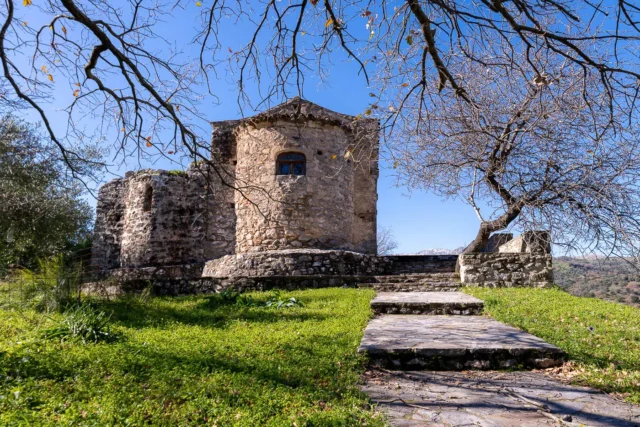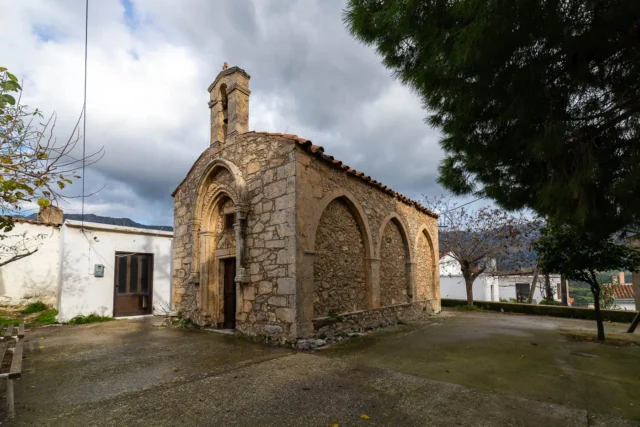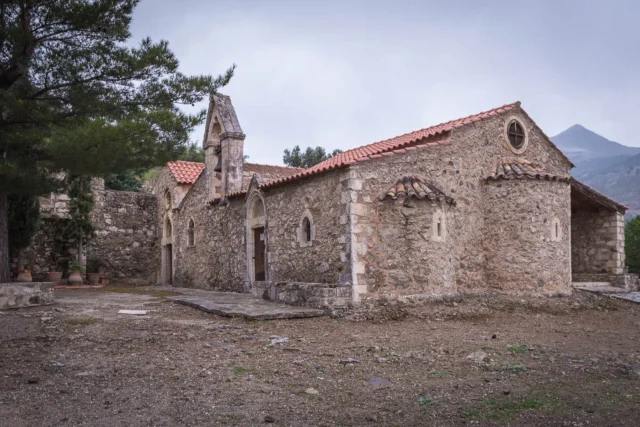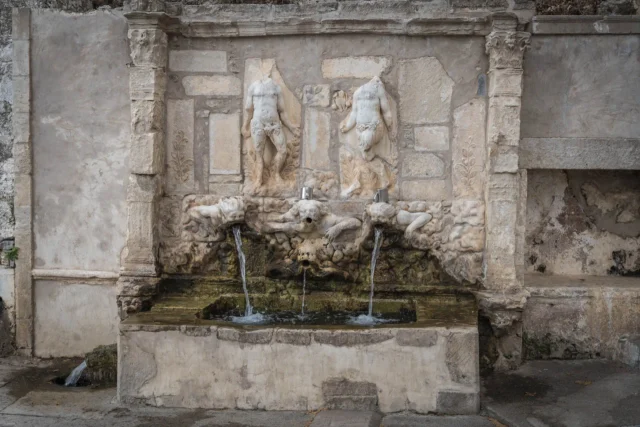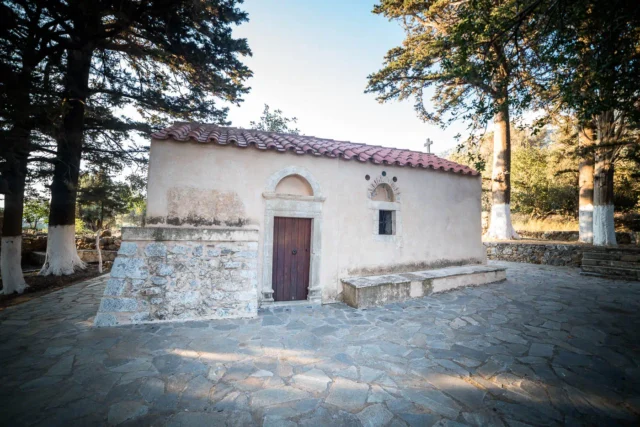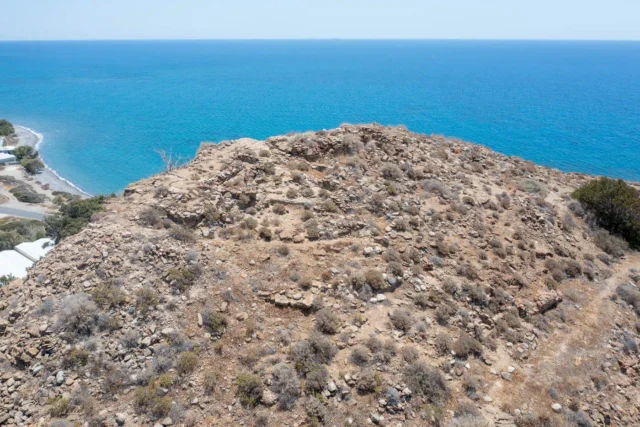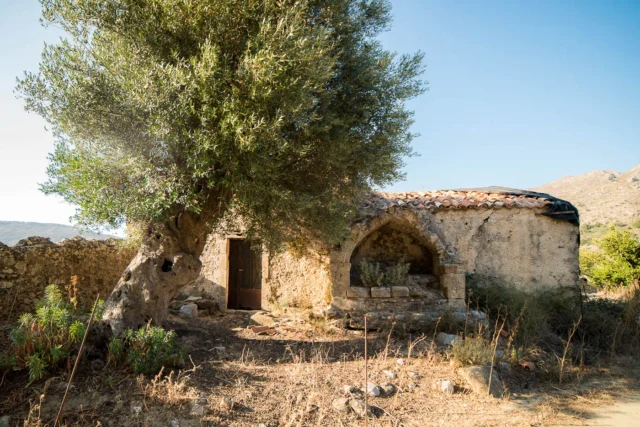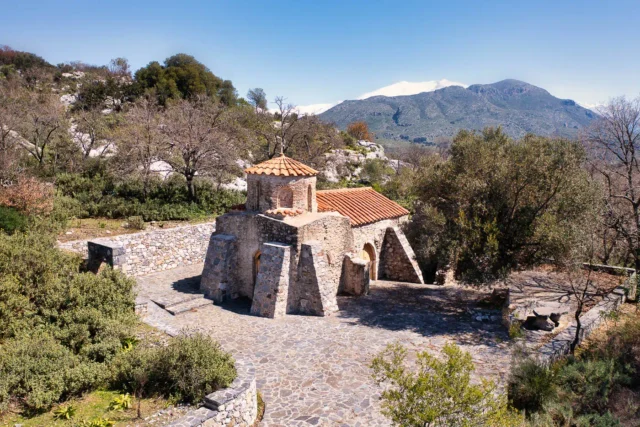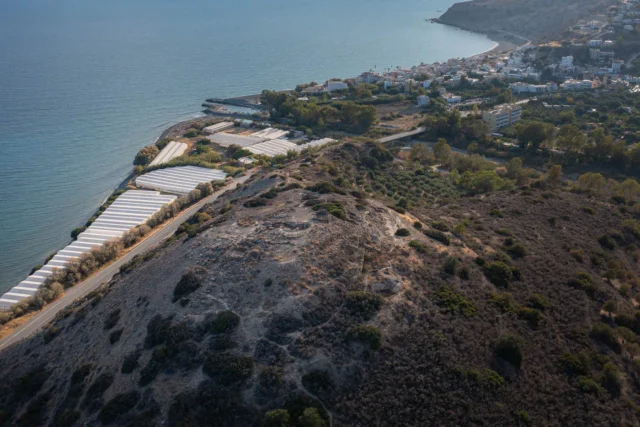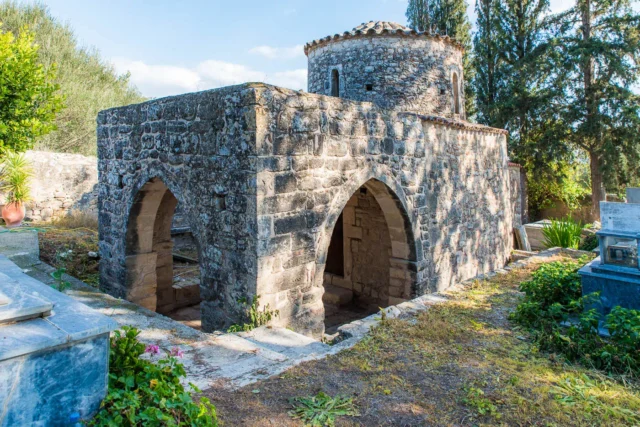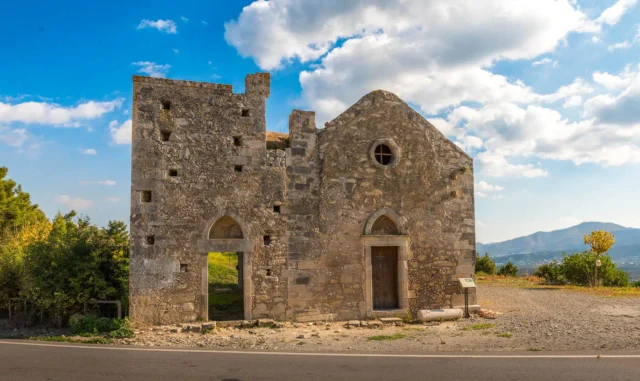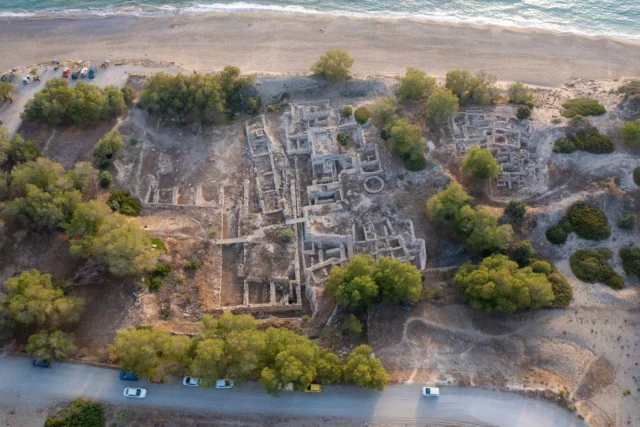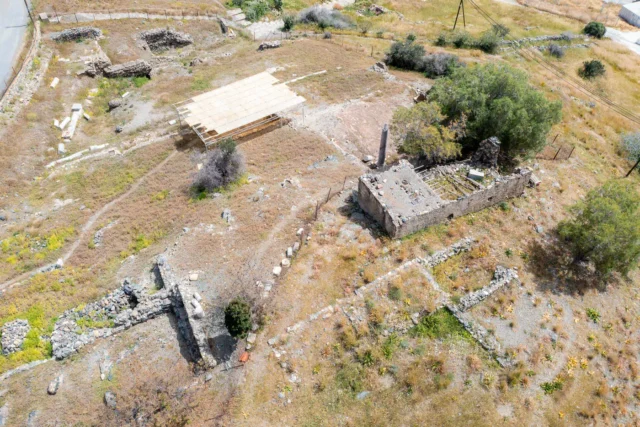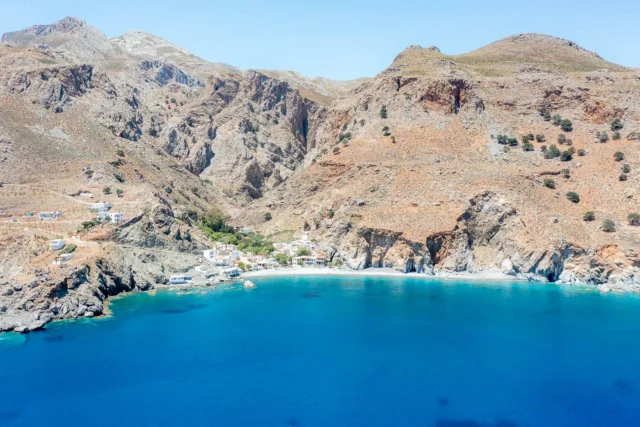829
listings found
Categories
Active filters:
Arkadi monastery
Located on a fertile plateau, this monastery is a symbol of Cretan resilience with a 16th-century structure blending Renaissance and Baroque styles. It became a refuge during the 1866 Cretan Revolt against Ottoman rule, where defenders, led by Abbot Gabriel Marinakis, detonated gunpowder in a heroic act of self-sacrifice. The event is commemorated on November 8th. The complex includes a museum and is linked to the Agios Antonios church on Veni hill. Other feast days are May 21st and August 6th.
Cretan Herbs
Our company, since1998 and based in the village of Zoniana deals with traditional-organic herbs of Crete, as well as health and beauty products. D&M Demokrates Kavvalos Company TELEPHONE 2834061179 – […]
Agia Anna
Agia Anna, near Nefs Amari, Crete, features 12th-century origins and 14th-century renovations. It houses 1225 Byzantine frescoes, including the Deesis and Cretan saints like Apostle Titus. The church's 1196 inscription marks its early phase, reflecting Byzantine art evolution in Crete. The frescoes, though aged, retain vibrancy, showcasing artistic and spiritual heritage. Located in the Amari Valley, the site offers insights into Crete's historical and cultural context, despite occasional access restrictions.
Valsamonero monastery (Aghios Fanourios)
Explore the historic Varsamonero Monastery in Crete, known for its well-preserved 14th-15th century frescoes and connection to Saint Phanourios.
Vrontisi monastery
Moni Vrontisiou, a historic monastery in the Psiloritis Mountains of Crete, dates back to the 9th century. Dedicated to Saint Anthony and the Touching of Thomas, it is known for its architecture and frescoes. The monastery played a role in the Cretan struggle for independence, serving as a refuge for monks and a hub for revolutionary activities. Its fortified walls, two-story main building, and bell tower stand as a testament to its history. The 15th-century marble fountain at the entrance is a highlight, featuring intricate carvings. The main church houses surviving frescoes from the 14th century. Moni Vrontisiou is located 49 kilometers southwest of Heraklion and is open daily from 8:00 AM to 5:00 PM with free admission.
Panagia in Livada
Located in Livada, near Fourfouras in Amari, this is a small, single-aisled, barrel-vaulted church from the 14th century. It features well-preserved frescoes from that period, financed by Nicholas Arkoleo, depicting the Virgin Mary as Blachernitissa, scenes from Christ's life, and military saints. The structure, originally built with rubble masonry, was expanded westward in the early 19th century. After restoration in 2006, the building and its Byzantine iconography are in good condition.
Fournou Koryfi
Fournou Korifi, an Early Minoan settlement near Myrtos village in Crete, dating back to the mid-3rd millennium BCE, provides valuable insights into the Minoan civilization. The settlement, with approximately 90 rooms during its peak, features the "Myrtos Goddess" figurine and evidence of workshops and diverse economic activities. Archaeologists, including Peter Warren, have studied the site's social structures, with interpretations ranging from communal living to a more complex hierarchy. The South House offers a glimpse into domestic life with its weaving room and kitchen. Fournou Korifi's well-preserved remains contribute to our understanding of Early Minoan architecture, social organization, and daily life.
Kaloeidena monastery
The Afentis Christos Church, a Byzantine structure overlooking Ano Meros, is a focal point for local faith, highlighted by annual August 6th feasts with communal meals and traditional celebrations. Kaloeidena Monastery, now largely in ruins, needs preservation, despite its historical and spiritual value. Both sites reflect Amari Valley's enduring traditions, with efforts aimed to revitalize Kaloeidena, ensuring its role as a cultural and religious landmark. The church stands as a testament to the local community's deep-rooted faith, while the monastery's restoration aims to preserve Crete’s heritage.
Panagia in Smilés
Explore the remnants of the Church of Panagia in the deserted village of Smilés, Crete. Discover its 14th-century frescoes and learn about its historical significance
Myrtos archaeological site
The Myrtos-Pyrgos archaeological site, also known as Pyrgos, is a significant Minoan Bronze Age settlement located on the southern coast of Crete, near Ierapetra. Occupied from the Early Minoan II to the Late Minoan IB period, it provides valuable insights into the development of the Minoan civilization. The site's strategic location and long occupation history make it a key resource for understanding the social, economic, and political dynamics of this ancient society. Excavations have revealed a variety of artifacts, including seals, seal impressions, Linear A tablets, and inscriptions on clay vessels, shedding light on the evolution of communication, administrative practices, and trade networks in Minoan Crete. The site's chronological phases, from Pyrgos I to Pyrgos IV, show a growing cultural sophistication and connections with other parts of Crete, including Malia and Knossos. The final phase, Pyrgos IV, ended with a catastrophic fire that destroyed much of the settlement, marking the end of its prominence.
Aghios Pavlos (Saint Paul)
The Church of Saint Paul, a 13th-century Byzantine church near Kamilari, Crete, features a large narthex and frescoes.
Aghios Georgios Falandras
Venetian-era monastery destroyed in 1821. Its history intertwines with Crete's religious traditions and fight for Greek independence.
Kommos archaeological site
Located on Crete's south coast, this site was a major Minoan harbor town for Phaistos and later a Greek sanctuary. It features monumental Minoan structures like Building T, shipsheds (Building P), and the significant residence House X. During the Greek and Roman periods, successive temples (A, B, C) were built over Minoan ruins. Finds of imported pottery from Egypt and Cyprus confirm its role as a trade hub. Abandoned in the Roman era, it is now a protected archaeological site.
Nefeleonas social cooperative
Nefeleonas Co-op is a social cooperative based in Heraklion, Crete, Greece. They develop a variety of social economy projects in both Heraklion and Athens. Some of their areas of focus […]
Lebena (Leveen)
Lebena, an ancient city on Crete's southern coast, is renowned for its Sanctuary of Asclepius, the Greek god of medicine. The city's strategic location near a good harbor and its association with the healing cult of Asclepius made it an important center for both trade and religious pilgrimage. Lebena was also a significant port for trade and commerce with the East during the Prepalatial period. The site of Lebena has a long history of occupation, with evidence of inhabitation dating back to the Neolithic and Early Minoan periods (ca. 3rd millennium BC). The presence of a variety of Eastern imports in secure Prepalatial contexts at Lebena, including faience, gold, ivory, and Egyptian scarabs, suggests that Lebena was a significant port for trade and commerce with the East during this time. In the Late Classical period (ca. 4th century BC), the Gortynians established the sanctuary dedicated to Asclepius at the harbor. The city was destroyed by a powerful earthquake in 46 BC but was subsequently rebuilt. The sanctuary continued to flourish throughout the Roman period, as evidenced by the numerous inscriptions and archaeological finds from the site. The strategic location of Lebena on the south coast of Crete made it an ideal location for a port. The sheltered bay would have provided a safe harbor for ships, and the proximity to the Asterousia Mountains would have offered protection from storms. Additionally, Lebena's location on the south coast would have made it a convenient stopping point for ships traveling between the Aegean and the Near East. The presence of Eastern imports at Lebena suggests that the site was an important point of contact between Crete and the East during the Prepalatial period.









